“It takes months to find a customer…seconds to lose one.”
This quote by Vince Lombardi, former American footballer, coach, and NFL executive, could easily be the defining truth of client-agency relationships.
As such, you’ll juggle many responsibilities and duties as an agency owner. Yet maintaining wholesome client-agency relationships will precede all, especially when your goal is to thrive and not merely survive!
So, what’s the key to a successful agency-client relationship model? How do you build strong relationships with new clients? Are there any specific roles and obligations?
Here’s where our guide containing insights, strategies, and information regarding client-agency relationships can be your trusted handbook for rewarding long-term client agency partnerships.
The Importance of Building a Strong Agency Client Relationship
You should treat your client and agency relationship as an investment in the long-term success of your business.
Presenting reasons why you should place a premium on it:
- Meaningful collaborations: Excellent client and agency relationship helps you understand and meet changing expectations, thus strengthening the partnership. You can build trust through aligned expectations and prompt issue resolution.
- Efficiency boost: Strong relationships, for example, an agency client relationship in advertising, help you streamline tasks, making your agency resource planning easier.
- Reputation and growth: Positive connections safeguard your reputation, increase client retention, attract new clients, and lead to referrals, expanding your business.
In sum, when you invest in a solid agency-client relationship, you win by creating a partnership that exceeds expectations and fosters thriving business in the long run.
 Quick Questions Before Diving In
Quick Questions Before Diving In
When it comes to information regarding client-agency relationships, you’ll likely encounter various considerations. So, before diving deep, let’s tackle a few quick questions so we’re on the same page.
Better still, you can keep the chat going. Become a member of our Facebook community for insightful discussions among agency/SaaS owners and consultants aiming to close clients daily!
How Do You Establish Trust With a New Client?
Agency-client relationships often seem like a tightrope walk, right? Fortunately, building trust with your new client can be a smooth journey.
Here are some friendly tips that can help pave the way to a stronger bond:
- Be honest, punctual, and open in communication. Apologize sincerely for any errors and provide a remedial solution.
- Prioritize active listening, correct concerns promptly, and show clients they are heard and understood.
- Deliver beyond expectations; this promotes loyalty and increases the likelihood of referrals.
- Identify and discuss common interests. Pleasant interactions help foster a sense of mutual understanding, trust, and shared goals.
How Do You Align Your Services With a Client’s Needs?
If you’re starting afresh and aiming to launch a digital marketing agency without prior experience, rest assured—veterans had similar beginnings.
Remember these pointers when tailoring your strategies:
-
-
- Understand your client’s business needs, including goals, workflows, and performance metrics.
-
-
-
- Set clear expectations from the start using online tools for real-time data and performance tracking.
-
-
-
- Create a trusted implementation process using CRM systems and project management software.
-
-
-
- Provide personalized experiences, adjusting strategies as needed.
-
-
-
- Continually seek client feedback to enhance services and relationships.
-
 What Strategies Can Be Employed to Overcome Conflicts?
What Strategies Can Be Employed to Overcome Conflicts?
Unfortunately, conflicts in business happen. So, first things first, don’t panic! Take a deep breath.
Now, let’s talk about strategies to untangle from those messy situations:
- Create an environment for open communication. Allow everyone to share their thoughts and issues whenever opinions differ. Listen actively and seek to understand others’ views.
- Consider win-win solutions by collaborating on alternatives that benefit both sides.
- If conflicts persist, consider mediation or third-party advice. For instance, you could involve senior management from both sides for their perspectives.
- Treat conflicts as opportunities to strengthen relationships; address issues transparently.
- Conduct post-conflict reviews to learn and prevent future conflicts.
What is the Most Critical Factor in an Agency-Client Relationship?
To answer the question, our years of experience point to one answer – trust is crucial in holding a client agency relationship together.
Trust is earned by consistently meeting expectations.
In fact, if you explore the three unique programs Prospecting On Demand offers, you’ll see that trust-building forms the essence of our strategies for helping agencies scale into 6 or 7-figure MRR assets.
Next up is straightforward and honest communication – the heartbeat of a successful client agency relationship. Listening actively and providing a timely response helps eliminate misunderstandings, strengthening your client’s trust and respect.
 What Are The Four Stages In The Agency-Client Relationship Life Cycle?
What Are The Four Stages In The Agency-Client Relationship Life Cycle?
Unlike long-term associations in the past, today’s client and ad agency relationships are shorter. In context, think of the client agency relationship as a four-stage journey.
Once you grasp the stages explained below, navigating gets more manageable, paving for successful partnerships.
1. Discovery
For any agency, discovery marks a crucial step. In this phase, it’s vital to thoroughly understand your client’s business and brand vision, assess competitors, identify challenges, and scrutinize data while auditing marketing assets.
Additionally, conduct SEO analysis and stakeholder interviews. While the process may vary for each client, these insights will help you craft a robust marketing strategy.
In fact, if you’re seeking more profitable client acquisition, don’t let this opportunity pass. We’re offering an assessment for agencies keen to unlock happier clients and faster growth.
2. Strategy
Ultimately, how well you plan or strategize determines whether your agency is just another noise in the marketplace or a name to reckon with.
During this phase, the agency team must formulate an all-encompassing marketing strategy featuring robust tactics customized to meet your client’s requirements.
At this juncture, you and your client must agree on specific deliverables. Likewise, reach a consensus on key agency metrics and the parameters for evaluating the campaign’s success.
3. Activation
Showtime, folks! Now’s the time to bring your plan to life and execute carefully crafted strategies across various channels.
Typically, agency tasks at this stage include rolling out advertising campaigns, overseeing social media accounts, content for social media or blogs, and email marketing.
4. Measurement
Are you curious about how your marketing campaign measures up against its goals? Now’s the time for the agency and client to embark on a data-driven journey. The results may throw up some puzzling patterns, but the essence of a strong client-agency relationship lies in collaborative analysis.
Dig into the data and metrics with your client, assess what worked, pinpoint areas for improvement, and make strategic adjustments for future success together!
 Roles and Responsibilities in the Agency Client Relationship
Roles and Responsibilities in the Agency Client Relationship
It’s a team effort when it comes to agency-client relationships in advertising and other fields. Like any good partnership, both sides have specific roles and responsibilities to make things tick.
Let’s break it down and see how each player contributes to the winning game plan.
The Agency’s Role in the Relationship
Let’s begin with the agency’s role in the relationship. Nothing fancy, just a straightforward conversation about what you should provide your clients so that they feel supported and understood.
Provide Marketing Expertise and Services
As an agency, your client counts on you for marketing services that will boost their brand and drive results.
Here’s what you can do:
- Understand your client’s business, goals, and USP. Know their challenges and competition.
- Clients prefer specialized skills, so have an informed team.
- Show dedication and innovation by going beyond expectations.
- Seek opportunities for client satisfaction and enjoy the work for a lasting partnership.
Create and Executing Marketing Strategies
Crafting and implementing strategies aligned with your client objectives hinges on how you really make things happen and hit those goals for your clients!
To truly achieve your clients’ goals and make things happen, consider these simple tips:
- Work closely with clients to understand goals, target market, and competition.
- Formulate marketing strategies leveraging market research, competitor analysis, brand positioning, and customer segmentation.
- Develop plans that capture attention, generate interest, and drive actions.
- Document agreed-upon work in writing, ensuring everyone is on the same page.
- Confirm verbal agreements via email before starting the job.
 Report Performance Updates Regularly
Report Performance Updates Regularly
Having progressed in your work, pick up the pace with regular performance updates – the secret sauce for building solid and transparent collaborations with your clients!
You can use this list as a quick guide:
- Keep lines of communication open with clients.
- Keep clients informed through regular reports and progress toward KPIs.
- Include qualitative feedback on project or account status. For example, a recent campaign generated appreciative messages.
- Share feedback, even if hostile. Explain the reasons behind negative feedback.
- Ensure transparency on client concerns and project dynamics.
- Provide contact reports and financial/budget updates promptly.
Laying out agency roles makes things smoother. But we get it – complex client relationships can be a bother.
Need a boost? Discover us at Prospecting On Demand and enhance your agency-client relationship with our proven tools, expert guidance, and impactful programs.
The Client’s Role in the Relationship
You might find it surprising – it’s not just agencies with roles to play; clients shouldn’t be sitting on the sidelines either! Understanding your client’s role ensures you’re always on the same page and building a rock-solid foundation.
Check out the scoop:
Provide Clear Goals and Objectives
While your job is to listen actively, your clients need to trust you and share clear goals and thoughts so you can make a plan. Goal-setting might be a bit tricky, so remember:
- Client goals should be specific and super straightforward to kick things off!
- Stick to one clear plan for the business in the long run without changing it often.
- Establish measurable goals for tracking progress and completion.
- Goals must be practical, actionable, and realistic.
- Each task should have a timeline and an overall finish date. In short, it’s like taking small steps towards success.
 Collaborate and Communicate with the Agency
Collaborate and Communicate with the Agency
When clients bring on the teamwork spirit, client-agency relationships make great work happen, and everyone’s happy.
Here’s how your clients can help:
- Actively support and assist the agency by addressing obstacles.
- Facilitate access to the relevant stakeholders for a successful marketing strategy.
- Answer agency queries quickly while providing timely and honest feedback.
- Address concerns promptly and promote agreeable resolution, improving the client and agency relationship.
Participate in the Marketing Process Actively
You might ask, why get the client involved in the marketing process? Well, when clients team up for marketing, the ideas get richer, strategies get sharper, and success becomes a team effort worth celebrating together.
Let’s take a quick look at how clients can pitch in to support the marketing process:
- Share data and a clear picture of marketing outcomes regularly with the agency.
- Create a supportive environment for creative ideas, challenges, and innovation.
- Provide clear, honest, and detailed feedback.
- Allocate enough funds for good visibility in all marketing areas.
- Stay accessible and ensure a fair-minded approval process.
- Leverage trustworthy networks to boost the visibility of marketing efforts.
- Take responsibility for delays caused by changes in marketing direction.
 Frequently Asked Questions (FAQs)
Frequently Asked Questions (FAQs)
For all the ins and outs of client-agency relationships, dive into our FAQ section – your guide to seamless collaboration and success!
Is it True That What The Client Wants The Client Gets?
While it’s true that customer satisfaction is critical in business, the saying “what the client wants, the client gets” may need a slight twist.
Instead of just fulfilling desires, successful agencies excel at anticipating and meeting customer needs.
By being an expert in your segment, delight your customers by providing innovative and valuable solutions. A combination of active listening, market insights, and using data will help you stay ahead in delivering what truly matters to your clients.
What Are the Key Elements of Effective Communication in Client-Agency Relationships?
A simple truth – strong team, weak communication; success stumbles! So, if we had to list the elements of effective communication in an agency-client relationship model, they would be:
- Diversified communication channels for optimized interactions. For example, in-person meetings, virtual chats, calls, and emails.
- Transparency and accessibility for operational efficiency.
- Collaboration between internal and external teams.
- Enhanced client-agency relationships through team introductions and social connections.
- Continuous improvement in agency communications.
How Do You Measure and Ensure Long-Term Success in a Client-Agency Partnership?
Keeping tabs on how well your agency and client get along is crucial for growth. Positive performance indicators (KPIs) like satisfaction scores, project success rates, client retention, and revenues indicate progress.
Nonetheless, qualitative factors like honest communication and trust are equally essential. In sum, a holistic view combining quantitative and qualitative aspects ensures an accurate gauge of a relationship’s strength and effectiveness.

What Are Some Examples of Client-Agency Relationships?
While client-agency relationships vary across industries, here are some examples to give you an idea:
1. Market Research Agency and Consumer Goods Companies
Consumer goods companies hire market research agencies to understand market dynamics and consumer preferences. The relationship relies on the agency’s data analysis and insights to inform strategic decisions.
2. SEO Agency and Small to Medium Enterprises (SMEs)
SMEs often work with SEO agencies to improve their online visibility and attract organic traffic. The partnership is centered on the agency’s skills in optimizing web content for better search engine rankings.
3. Advertising Agency and Brand
A brand partners with an advertising agency for creative campaigns that enhance brand awareness. The relationship centers on the agency’s expertise in crafting and executing strategies that resonate with the target audience.
Conclusion
Remember, investing in a robust agency-client relationship isn’t just about success; it’s about forging a thriving partnership for long-term prosperity. So, embrace the stages, embody the roles, and make it happen.
At Prospecting On Demand, we’ve been where you are – navigating the challenges of scaling an agency with our clients. So, if you’d like to accelerate your growth journey with personalized mentoring, we have an offer for you! Let’s connect; we’re ready when you are!









